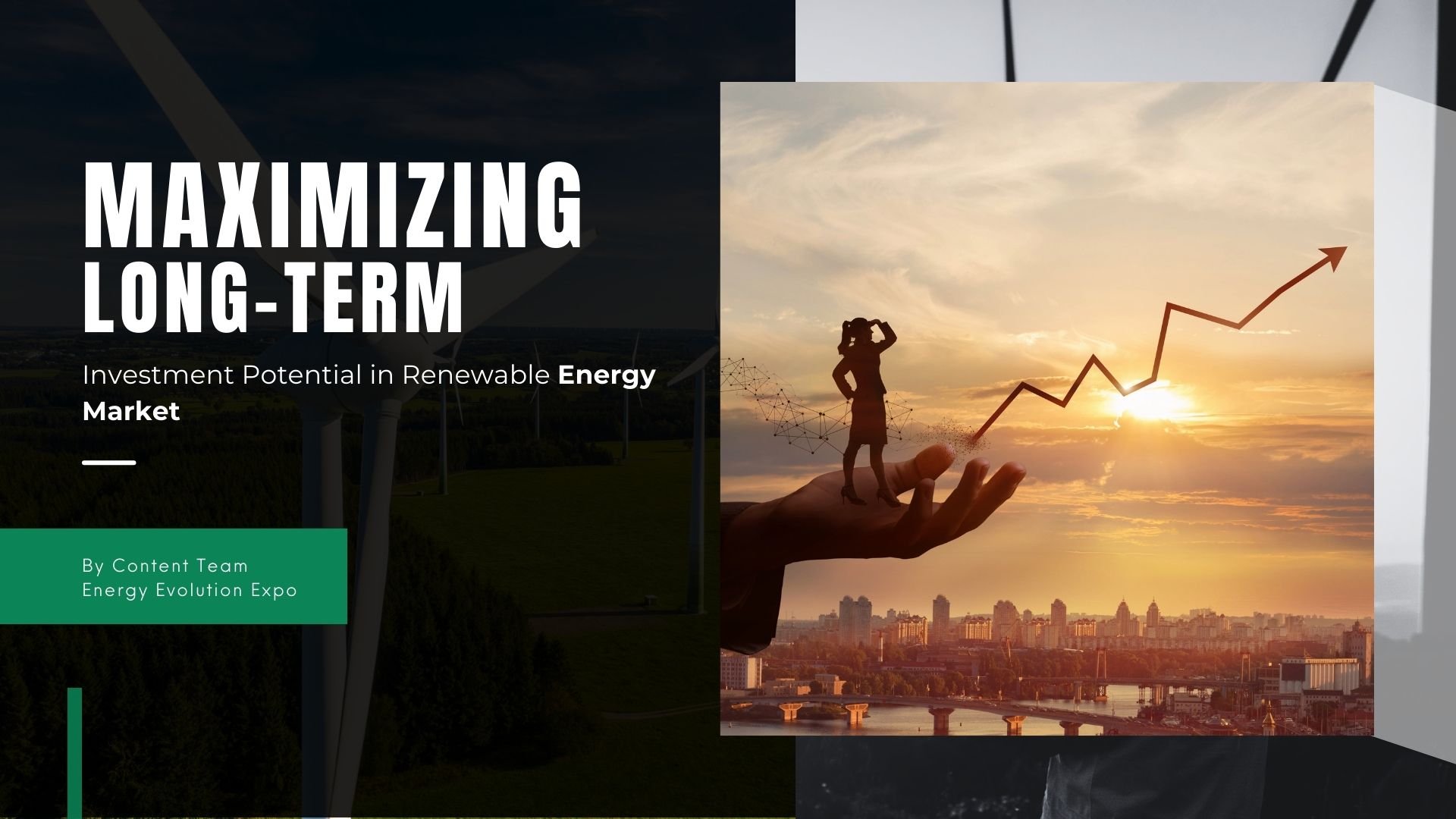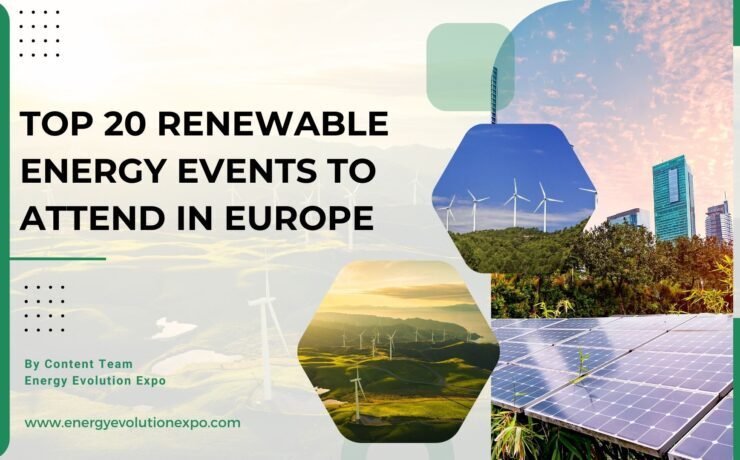Maximizing Long-Term Investment Potential in Renewable Energy Market

Given the increasing severity and consequences of climate change, the transition to renewable energy sources has become a pressing matter. The environmental advantages of this gradual transition towards utilizing more sustainable and cleaner resources for energy production cannot be overstated.
Renewable Energy Sector
Furthermore, the growth in the renewable energy sector is expected to create numerous new and promising investment opportunities. There exist significant long-term prospects to be capitalized on in this field. Businesses stand to benefit from potentially higher profit margins due to financial incentives or governmental support for infrastructural development. Meanwhile, investors could access lesser-known investment options that enable diversification of their portfolios into the widely discussed ESG (environmental, social, and governance) domain.
Amidst the global shift towards renewable energy, it is evident that the sector is experiencing more favorable conditions than challenges. While obstacles like high production costs and delays in projects hinder the sector’s growth and progress, there are also positive factors such as increasing demand, new incentives, and cost efficiency driving the transition.
The Covid-19 pandemic introduced disruptions in the supply chain, interconnection issues, transmission constraints, and uncertainty in trade policies, affecting investments and developments in renewable energy. However, it also prompted a sense of prudence regarding global trajectory and a renewed focus on sustainable practices.
In recent decades, countries rich in fossil fuels, particularly oil, have traditionally wielded significant influence over global energy markets. This dominance has given rise to governance structures like the Organization of the Petroleum Exporting Countries (OPEC), established in 1960. However, with growing awareness of climate change and the imperative to transition towards cleaner energy sources, there is now a discernible shift in this geopolitical landscape.
The once firm grip that oil-producing nations held over oil-consuming counterparts is gradually waning, primarily due to the increasing availability of natural resources that drive renewable energy sources. While China has emerged as a key player in manufacturing clean technology products such as solar panels, wind turbines, and electric vehicle batteries, other countries endowed with renewable resources are also making strides to capitalize on this transition.
1. Market Trends:
Market trends are currently showing a significant shift towards global energy transition. The push to address climate change has led to worldwide efforts to move away from fossil fuels towards renewable energy sources, supported by initiatives such as the Paris Agreement that focus on reducing carbon emissions. Additionally, there is a growing trend of countries and companies setting ambitious decarbonization goals, leading to an increased demand for renewable energy.
Another significant aspect of this transition is the declining costs of solar and wind power due to technological advancements and economies of scale. This has caused the levelized cost of electricity for solar and wind to drop below that of coal and natural gas in many regions. Furthermore, renewable energy sources have achieved grid parity in various areas, indicating that they can generate electricity at a competitive cost without subsidies compared to traditional power sources.
Energy storage technologies, such as advancements in lithium-ion batteries and emerging options like solid-state batteries, are enhancing the efficiency and cost-effectiveness of storing energy. Moreover, the successful integration of intermittent renewable sources like solar and wind into the power grid is facilitated by efficient energy storage solutions.
2. Technological Advancements:
In the realm of technological advancements, solar power has seen significant progress. Efficiency improvements in photovoltaic technology have resulted in the creation of high-efficiency solar panels such as monocrystalline and bifacial panels, leading to enhanced sunlight capture and electricity generation. Moreover, innovative solutions like solar roofing tiles and floating solar farms have broadened the scope and integration of solar energy.
Similarly, wind power has also witnessed notable advancements. The evolution of turbine technology has given rise to larger and more efficient turbines utilizing advanced materials and aerodynamics, thereby boosting energy output from wind farms. Furthermore, the establishment of offshore wind farms, particularly in Europe and the East Coast of the U.S., takes advantage of stronger and more consistent winds, resulting in increased energy yields.
Advancements in battery chemistries such as lithium-sulfur and solid-state batteries show potential for increased energy densities and extended life cycles. Solutions at the grid-scale level, such as pumped hydro storage, compressed air energy storage (CAES), and innovative battery systems, facilitate the integration of renewable energy on a large scale.
3. Regulatory Support:
Support from regulations plays a crucial role in promoting renewable energy development. Government policies, such as tax credits, subsidies, and feed-in tariffs, provide incentives for renewable energy projects. An example of this is the Investment Tax Credit (ITC) in the U.S., which supports solar energy initiatives.
Mandates and standards, like Renewable Portfolio Standards (RPS), obligate utilities to procure a specific percentage of their energy from renewable sources. Additionally, international agreements like the Paris Agreement see countries investing significantly in renewable energy to reduce greenhouse gas emissions. Furthermore, the COP ( Conference of Parties) conferences foster policies and agreements that encourage investment in renewable energy.
4. Financial Health and Stability:
An evaluation of the financial health and stability of companies involves analyzing various financial metrics such as revenue growth, profitability, debt levels, and cash flow. Additionally, assessing the management quality includes evaluating the experience and track record of the management team in executing renewable energy projects and navigating regulatory landscapes. Similarly, the viability of specific renewable energy projects is determined through feasibility studies to assess technical and economic feasibility. The expected returns on investment (ROI) are calculated by considering factors such as project costs, energy production estimates, and regulatory incentives.

5. Geographical Opportunities:
Various geographical opportunities present themselves in the emerging and developed markets for renewable energy expansion. For instance, countries in Asia such as India and China are significantly increasing their renewable energy capacities. Similarly, regions like Africa and Latin America, which experience high solar irradiance and have increasing energy needs, are directing investments towards solar and wind energy.
Furthermore, in developed markets like the United States, federal and state policies combined with technological advancements are major drivers of the renewable energy sector. In Europe, strong regulatory backing and ambitious climate objectives contribute to significant investments in renewable energy infrastructure. Additionally, China stands out for its leadership in renewable energy installation and manufacturing, particularly in the fields of solar and wind energy.
6. Investment Vehicles:
Various investment vehicles are available for individuals interested in supporting renewable energy technologies and environmentally friendly projects. These include direct investment in leading companies within the renewable energy sector for targeted exposure or diversification across different segments. Additionally, Exchange-Traded Funds (ETFs) and Mutual Funds such as iShares Global Clean Energy ETF (ICLN) or Invesco Solar ETF (TAN) provide broader exposure to global clean energy companies or those focused on the solar industry.
Another option is to consider green bonds, which are fixed-income investments issued to fund environmentally friendly projects like renewable energy developments. These investments offer stable returns while aligning with environmental objectives. Individuals interested in investing in renewable energy sources and aiming to mitigate concentration risk may find it beneficial to consider allocating their investments into clean energy exchange-traded funds (ETFs).
The iShares Global Clean Energy ETF (ICLN) stands out as the largest ETF in this sector, boasting an impressive $4.5 billion in assets under management (AUM). Following closely is the First Trust Nasdaq Clean Edge Green Energy Index Fund (QCLN), which holds over $1.4 billion in AUM. Besides these, the Invesco WilderHill Clean Energy ETF (PBW) and the BlackRock World ex U.S. Carbon Transition Readiness ETF (LCTD) are also gaining traction as notable ETF options in the clean energy industry.
For those specifically interested in concentrating their investments in solar energy, the Invesco Solar ETF (TAN) may be a suitable choice, with AUM exceeding $2 billion. Alternatively, investors looking for exposure to wind energy can turn to the First Trust Global Wind Energy ETF (FAN), despite its AUM of $275 million, placing it below other ETFs in the aforementioned list.
7. Risk Management:
Risk management strategies include diversifying across different technologies (such as solar, wind, and storage) and geographic regions to mitigate specific risks. It is also advisable to balance investments between established companies with steady returns and emerging companies with high growth potential. Additionally, staying informed about regulatory changes in government policies and considering the stability and regulatory environment of the countries where investments are made are vital to managing policy risks in the renewable energy sector.
Key Sector and Comapnies:
With policy support and increased inclusion and competitiveness, the investing community is increasingly eyeing long-term opportunities in this space. Investments and incentives are already in place to boost the sector, suggesting that at least the stronger players could yield good returns for early investors. Capital markets have acknowledged this trend. Many companies concentrate on renewable energy, positioning them well to benefit from this investment megatrend. However, a few energy companies stand out as the top renewable energy stocks to buy.
NextEra Energy is one of the world’s largest producers of wind and solar energy. It generates power at its Florida utilities and its energy resources segment, which sells electricity under PPAs to other utilities and large corporate buyers.
Brookfield Renewable is a global leader in renewable energy. It’s one of the world’s largest producers of hydroelectric power, which will make up 50% of its portfolio in 2024. Brookfield also has been increasing its wind (onshore and offshore), solar (utility-scale and distributed generation, such as rooftop solar), and energy storage expertise. The company sells the bulk of its power under long-term PPAs that generate steady cash flow.
Clearway Energy is one of the largest owners of renewable energy generating facilities in the U.S. It complements its wind and solar energy portfolio with highly efficient facilities powered by natural gas. Clearway also sells its power via PPAs that generate a steady cash flow for the company.
First Solar develops and manufactures thin-film solar panels that use their larger size to generate more energy than competing technologies, making them ideal for utility-scale solar energy projects.
SolarEdge Technologies develops and manufactures an optimized inverter system. This component maximizes the power produced by solar panels, helping to lower the cost of energy generated by the system. Like First Solar, SolarEdge Technologies should benefit from the accelerating growth of solar energy worldwide.
FuelCell Energy (FCEL): A pioneer in renewable energy is now collaborating with Chart Industries on decarbonization and hydrogen technology.
Bloom Energy (BE): Another hydrogen player is set to launch the first natural gas-powered solid oxide fuel project in India. The company’s stock recently got upgraded by J.P. Morgan.
Plug Power (PLUG): Another green hydrogen player, recently secured three major deals in Europe.
Air Products & Chemicals (APD): A leader in industrial gases is investing heavily in low-carbon hydrogen projects.
L’Air Liquide SA (AIQUF): Aims to power the world with clean and renewable energy sources.
Linde plc (LIN): Industrial gas and engineering company is also investing heavily in clean technologies.
Cummins (CMI) – After acquiring Hydrogenics in 2019 for its hydrogen production technology, the company has recently announced more than $1 billion in investment commitment to help decarbonize America’s truck fleets.
Investment in renewable energy is not just an opportunity for financial growth but a crucial step toward a sustainable future. As the world grapples with the impacts of climate change and the urgent need to reduce carbon emissions, renewable energy sources like solar, wind, and energy storage technologies are becoming increasingly vital.
These investments are driven by declining technology costs, favorable regulatory environments, and a global shift toward cleaner energy solutions. By capitalizing on the long-term potential of renewable energy markets, investors can contribute to environmental sustainability while securing robust financial returns, positioning themselves at the forefront of an inevitable global energy transformation.
We need to keep up with all recent innovations to reap maximum benefits and to facilitate a better understanding of the latest developments and trends in the Renewable energy Industry, various Conferences and Expos, which bring the Industry leaders together, serve as an all-inclusive platform. The Energy Evolution Awards, Conference, and Expo organized by Next Business Media is making its debut in Spain in 2025. It will be a leading forum dedicated to honoring excellence in Energy Technology, showcasing innovations, and fostering collaborations.
The events unite industry leaders, and visionaries to explore the latest advancements, tackle key challenges, and shape the future of Energy. The Energy Evolution Awards, Conference, and Expo will celebrate outstanding achievements, promote sustainable practices, and drive the Energy Industry forward into a technologically advanced sustainable era. Energy Evolution Awards, Conference, and Expo will be a platform for cultivating innovation and shaping a brighter, more efficient energy landscape.





